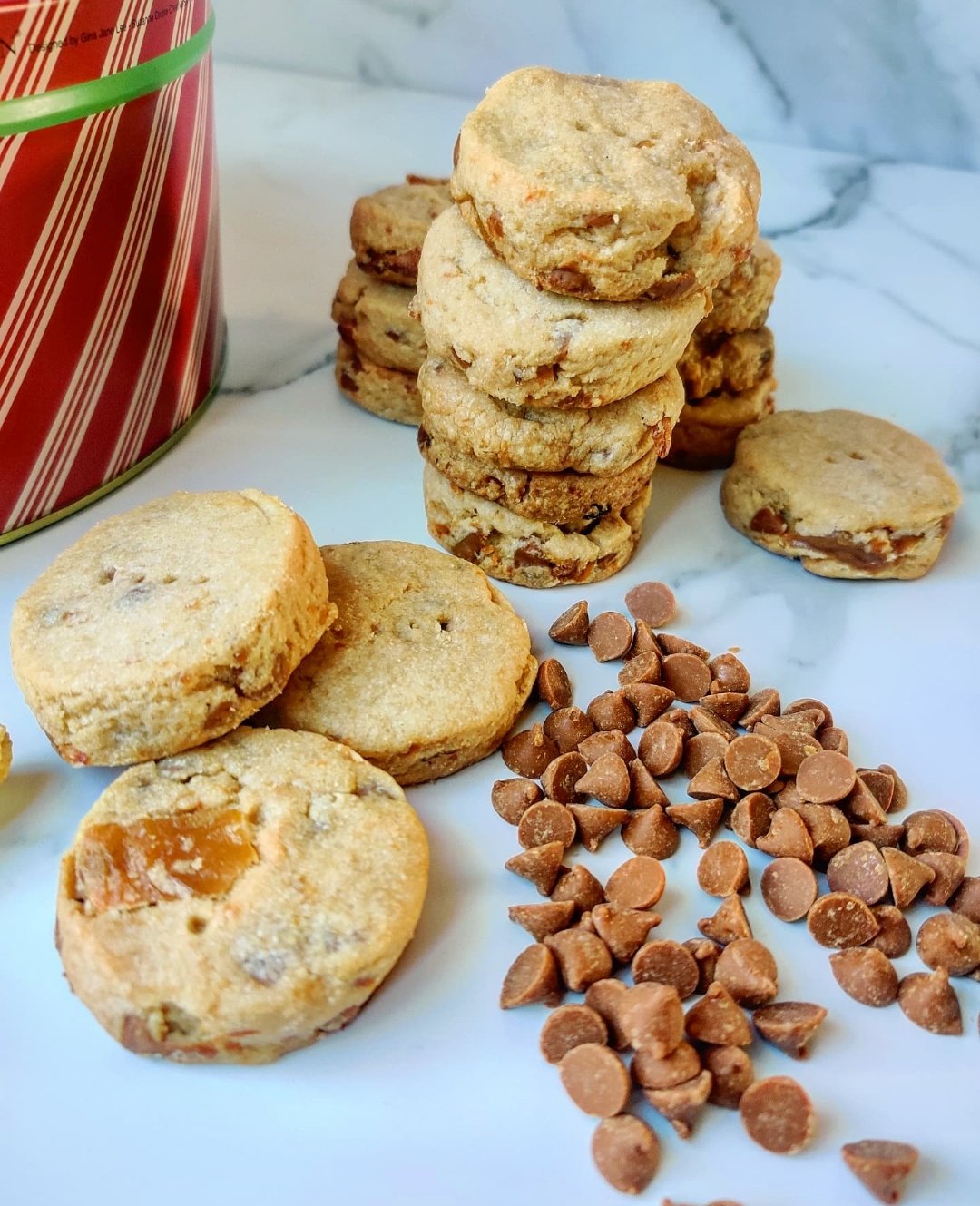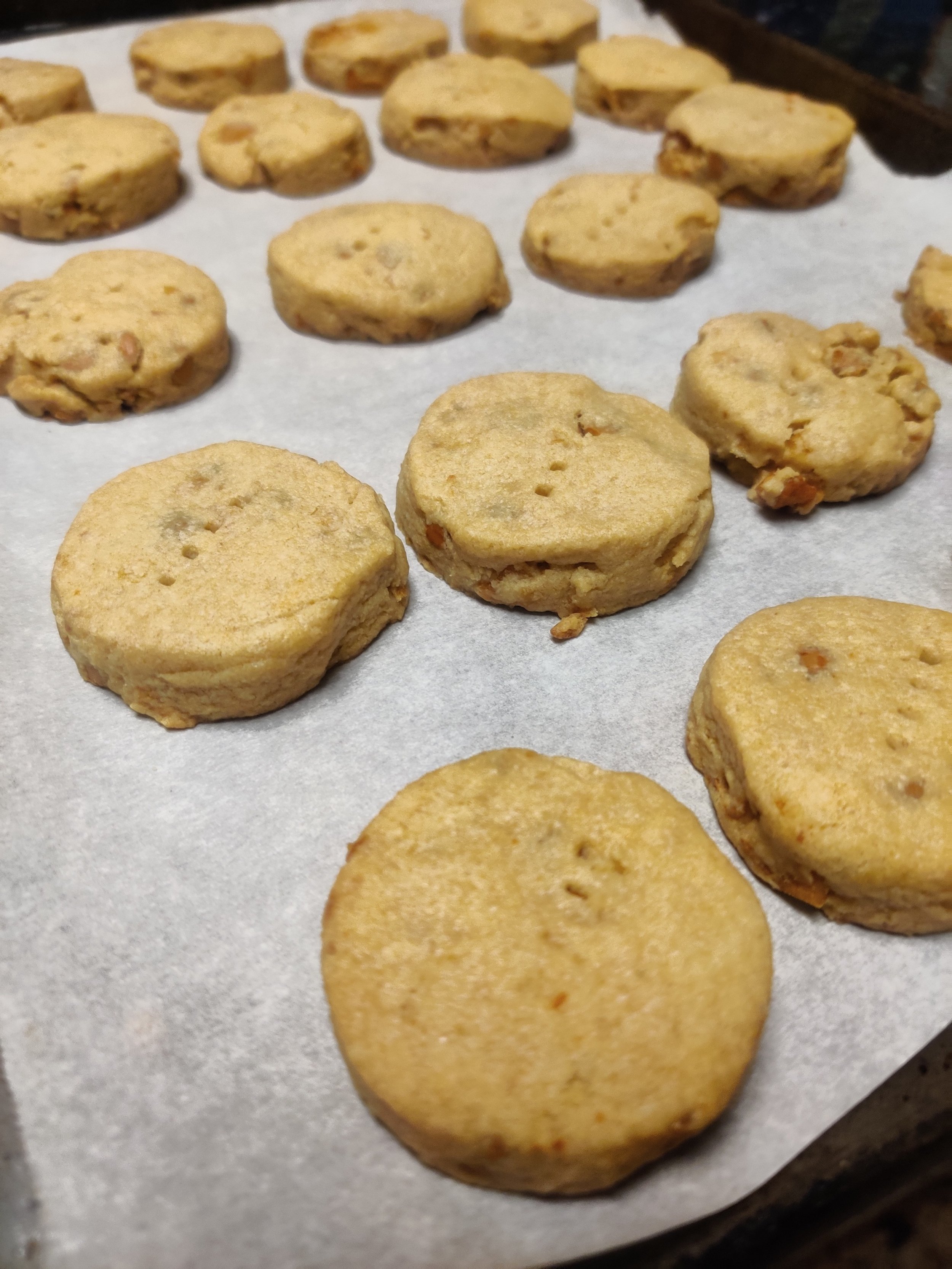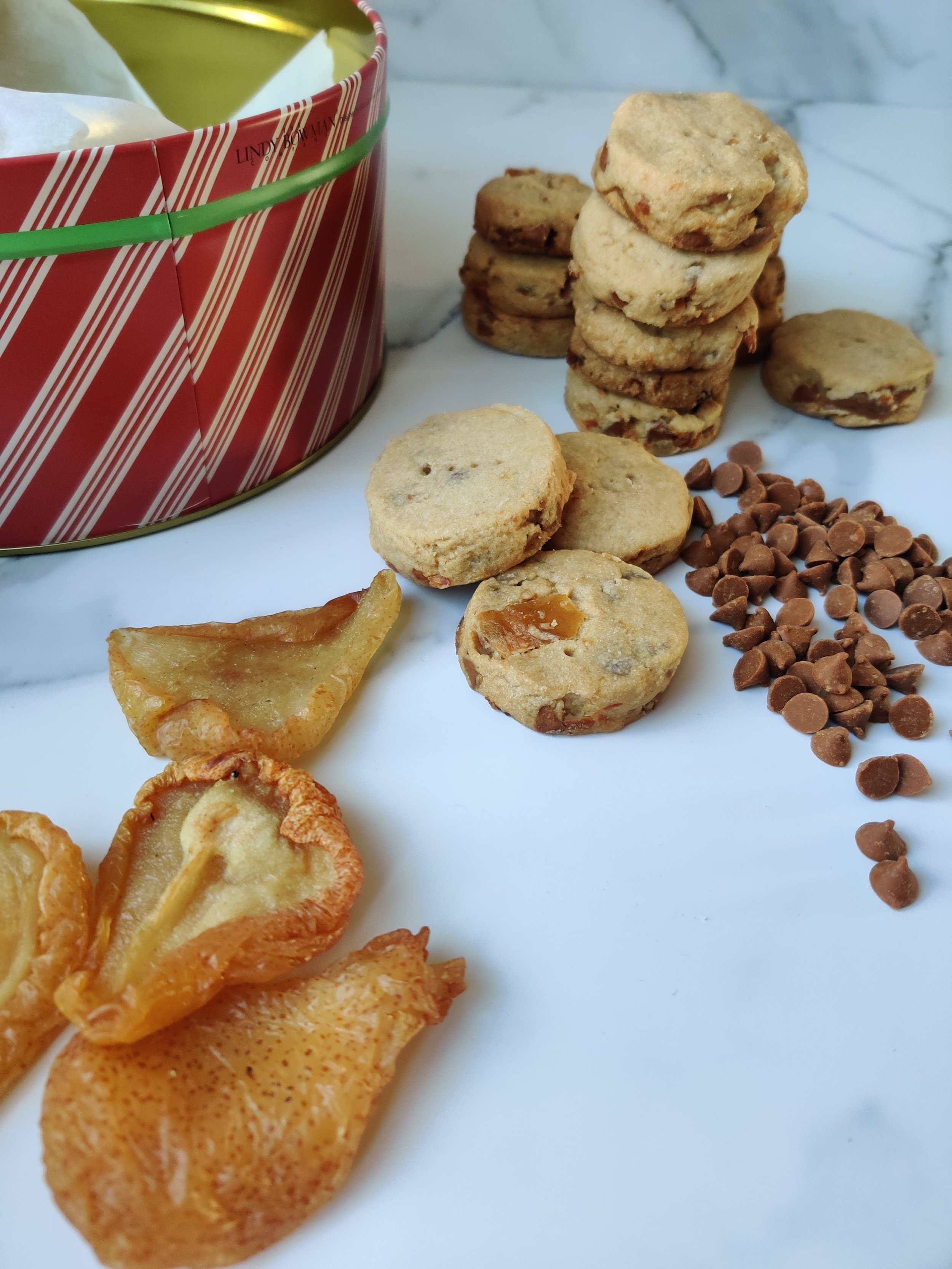Cinnamon and Pear Shortbread Biscuits
Introduction to Shortbread Cookies: Simple, Buttery Perfection
Few treats embody the beauty of simplicity quite like shortbread cookies. With just a handful of ingredients—butter, sugar, and flour—these classic cookies deliver a melt-in-your-mouth texture and rich, buttery flavor that's truly irresistible. Strictly by Scottish standards, "one part white sugar, two parts butter, and three to four parts plain wheat flour". The one thing that makes the small number of ingredients scrutinized is the quality, so find the best you can.
Honesty, I can eat these all day long, even though shortbread biscuits are associated with the holidays.
Shortbread cookies have a long history, originating in Scotland and cherished worldwide for their crumbly texture and delicate sweetness. As I noted, they are a staple during holidays, tea time, and special occasions, but their versatility makes them perfect for any time of year. Whether shaped into rounds, fingers, or festive designs, shortbread cookies are as beautiful as they are delicious.
I decided to spruce the cookies up with pear and cinnamon. Both are essential winter flavours, mainly in the dessert department. We tend to turn to dried cranberries, but dried pears offer the same texture and a great taste that pairs wonderfully with cinnamon. Who needs a poached pear with mulled wine spices when you have these crunchy treats that melt in your mouth?
As for the cinnamon chips, you can also turn them into toffee bits and omit the dried fruit altogether.
Here are some practical tips for making perfect shortbread:
1. Use High-Quality Butter
Butter is the star ingredient in shortbread, so choose a good-quality, unsalted butter for the best flavor. The better the butter, the better the cookie.
2. Keep Ingredients Simple
Stick to the traditional trio of butter, sugar, and flour. If you’re adding flavors (like vanilla or citrus zest), keep them subtle to maintain the classic shortbread taste.
3. Measure Accurately
Use a kitchen scale for precise measurements, especially for flour. Too much flour can make the cookies dense instead of light and crumbly.
4. Don’t Overmix
Mix the dough just until it comes together. Overmixing can develop gluten, leading to tough shortbread instead of the tender, crumbly texture you want.
5. Chill the Dough
Let the dough rest in the fridge for at least 30 minutes before rolling or shaping. This helps the butter firm up and prevents spreading during baking.
6. Roll Evenly
For consistently baked cookies, roll the dough to an even thickness. Use rolling pin guides or evenly spaced dowels to achieve this.
7. Prick the Dough
If making traditional shortbread, prick the surface of the dough with a fork before baking. This allows steam to escape and helps maintain the cookie’s shape.
8. Bake Low and Slow
Shortbread is best baked at a lower temperature (around 300–325°F or 150–165°C) to prevent browning. The cookies should stay pale with just a hint of golden edges.
9. Use a Sharp Cutter
If using cookie cutters, make sure they’re sharp to create clean edges. Re-roll scraps sparingly to avoid overworking the dough.
10. Let Cool Completely
Allow the shortbread to cool fully on a wire rack before handling. They’ll firm up as they cool, making them easier to store and serve.
11. Store Properly
Store shortbread in an airtight container at room temperature for up to two weeks. Their flavor and texture often improve after a day or two.
12. Experiment with Add-Ins
While classic shortbread is delightful on its own, you can try variations like adding chocolate chips, nuts, or spices, or even dipping the finished cookies in melted chocolate.

Cinnamon and Pear Shortbread Biscuits
Ingredients
- 3 cups white whole wheat or all-purpose flour + extra for dusting
- 1/2 cup + 2 tablespoons granulated sugar
- 1/2 teaspoon salt
- 2/3 cups dried pears
- 2/3 cups cinnamon chips or toffee bits
- 1 cup butter
- 1 teaspoon vanilla extract
- 2-3 tablespoons water
- Optional: 2-3 tablespoons heavy cream
Instructions
- In a stand mixer bowl on medium speed with a paddle attachment, beat the softened butter and sugar until incorporated, fluffy and light.
- Gradually add in the flour and salt at low speed until a dough begins to form. Initially, it will appear dry and won't create a dough that sticks together.
- Add the finely diced pears (you can also pulse in a food processor) and cinnamon chips and mix until evenly distributed and mix in with a spatula.
- Add the vanilla, and activate the gluten formation by adding the water and check a small amount with your fingers before bringing the dough together with your hands. Add more water and/or cream as needed to get the dough to stick together but don't put too much liquid! Only enough to work it into a slab.
- Transfer the dough to a lightly floured surface and use a rolling pin with cling film on top to flatten the dough about a 1/2 inch. Use a cookie cutter or knife to shape the individual cookies.
- Lay them out on parchment-lined baking trays and pierce with a fork (to ensure the heat gets in the middle during bake time) before chilling for at least 30 minutes.
- Bake at 350F for 30 minutes, then remove from oven and cool. Enjoy!
Notes
If you use white whole wheat flour, you will likely need to add 2-3 tablespoons of heavy cream when activating the gluten since there is less of it. You can also use all-purpose flour when dusting the surface to shape the dough.
Nutrition Facts
Calories
92Fat (grams)
5.2 gCarbs (grams)
10.3 gSugar (grams)
4.9 gProtein (grams)
1.4 gI am not a certified nutritionist and any nutritional information on dontmissmyplate.com should only be used as a general guideline.


